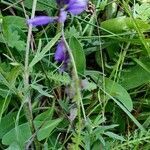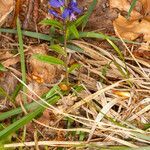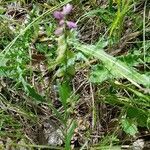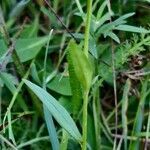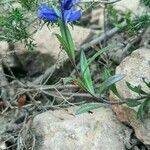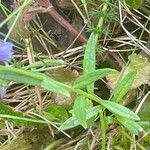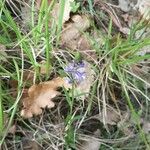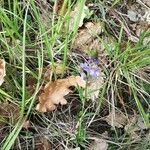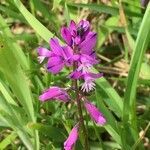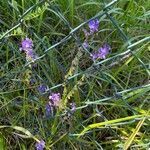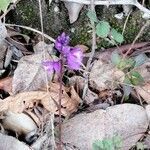Ascending to weakly erect, glabrous or glabrescent, perennial rhizomatous herb to c. 40 cm high. Leaves elliptic to lanceolate, acute, 8–30 mm long, 2–6 mm wide, glabrous. Flowers mauve-blue, 8‒35 in terminal racemes 2–12 cm long; bracts lanceolate, c. 2 mm long; bracteoles ovate, c. 1 mm long, purplish, soon caducous; pedicels 1–2 mm long; sepals free, the upper and lower ones narrow-ovate, 2–3 mm long, alae (wing sepals) obovate, 5–8 mm long, 2–4.5 mm wide in fruit, 3–5-veined with connecting lateral veins; corolla c. 7 mm long, shortly exceeding sepals at anthesis, keel fimbriate with appendages c. 2 mm long, lateral petals entire, slightly longer than keel. Capsule obcordate, (?4‒) 6‒9 mm long, 5‒7 mm wide, glabrous. Seed obloid, 2–2.5 mm long, silky, with a 3-lobed aril c. 1 mm long.
A bush that keeps growing from year to year. It is often a low plant. It grows 15 cm high and spreads 10 cm wide. The stem is erect and simple. The leaves at the base are fattened and oval and the ones on the stem are more narrow. The flowers are small and in dense racemes. The flowers are 5-8 mm long. They are blue, red or white. The wings have 3 veins.
